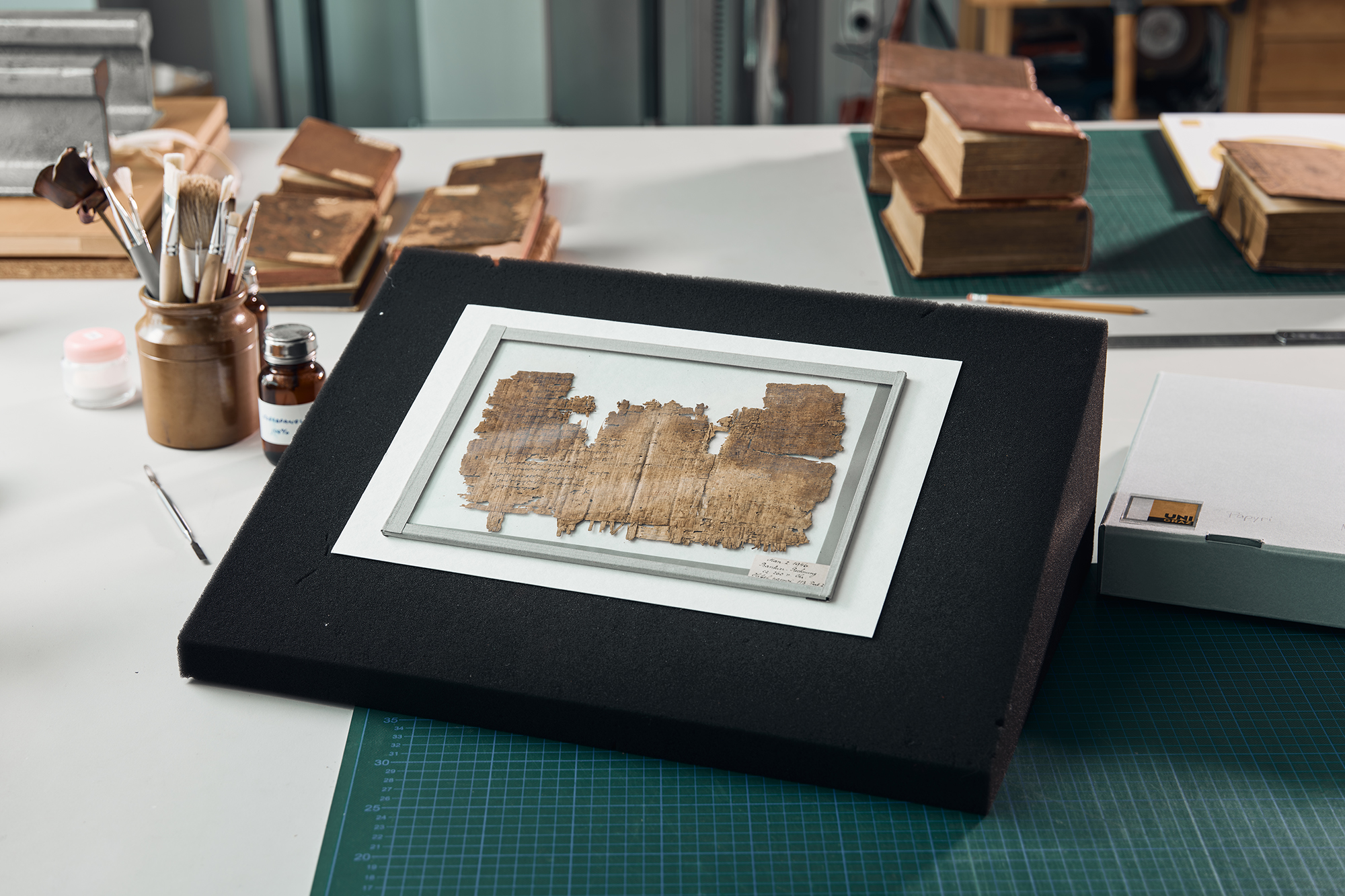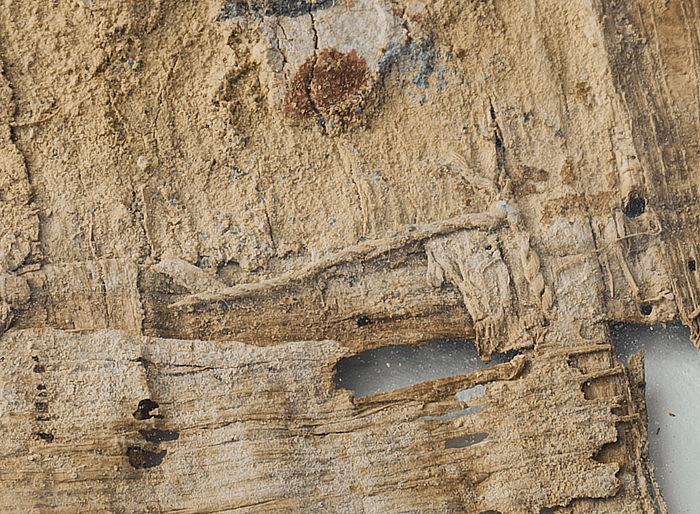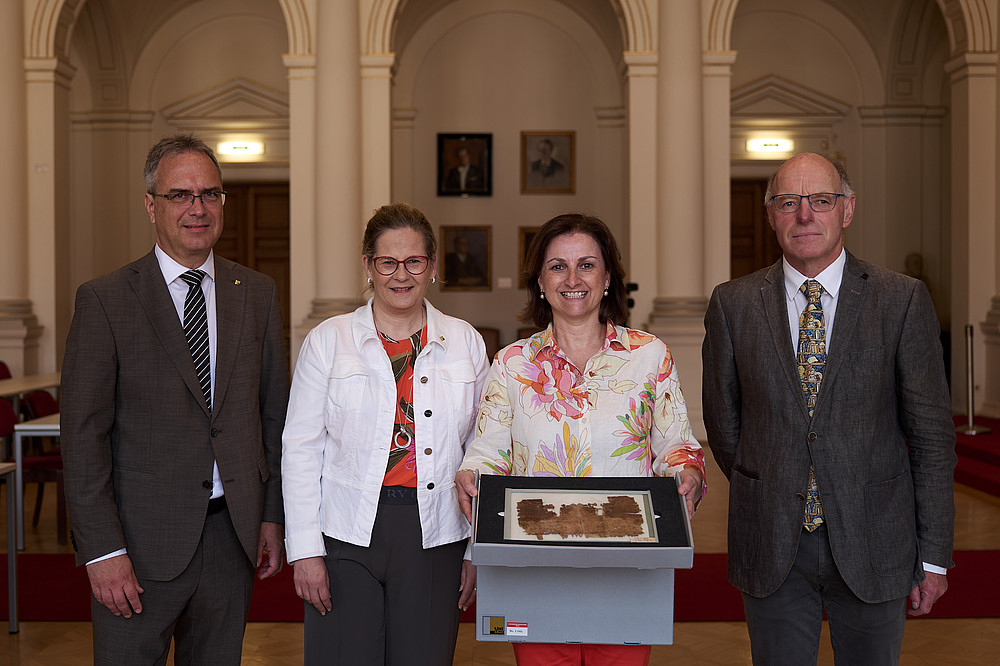The papyrus fragment (Graz, UBG Ms 1946), which measures only about 15 x 25 cm, has belonged to the University of Graz since 1904. Discovered during an excavation in the Egyptian necropolis of Hibeh (today El Hiba) south of Fayum (El-Fayoum), the fragment now belongs to a collection of 52 papyrus objects, some of which were used as so-called cartonnage for mummy wrappings in the Ptolemaic period (305-30 BC).
A very special to contribute to the history of the book
The Graz Mummy Book is a bifolio (folded leaf) from a notebook recording tax accounts for beer and oil in Greek around 260 BC. “This discovery was totally serendipitous. First I saw a piece of thread, only then did I notice the format of a book. I saw a central fold, the stitching holes and the written text within clearly defined margins on the papyrus. As a conservator, it feels very special to contribute to the history of the book. At the same time, you think it's surreal. It's like watching a movie!” Theresa Zammit Lupi, head of conservation of the Special Collections of Graz University Library, enthusiastically states about her discovery.
How does it feel to make such a discovery
The oldest surviving form of a book we know of to date
The earliest codices known to date with evidence of stitching in book form have been dated to 150-250 AD. Two such examples are located in the British Library (Add MS 34473) and the Chester Beatty Library, Dublin (CBL BP II). “The Graz Mummy Book was created 400 years earlier, making it the oldest surviving form of a book we know of to date,” emphasize Erich Renhart and Thomas Csanády, heads of the Special Collections at Graz University Library. “However, it is not unlikely that more such codex fragments exist in other collections that have just not been systematically searched for so far. After all, papyrus was a relatively cheap writing material, and large quantities of fragments have survived,” says Erich Renhart. “Researching the materiality and context of our objects plays a central role at the Special Collections. If our conservators did not also scientifically engage with the objects on a regular basis, this discovery would never have come about,” Thomas Csanády emphasises.
Digitised cultural objects
Even in an age of progressive digitisation, libraries are places where work is consistently done on the preservation of historical cultural objects and where research is conducted. “It is thanks to the competence of the Special Collections team at Graz University Library that a fresh look at digitised objects that have already been known for a long time has led to new insights – such as the case of the Graz Mummy Book. We are eager to discuss the discovery and its consequences with the wider specialist community,” head of Graz University Library Pamela Stückler elaborates.
Motivated researchers
“The discovery of the historically important book fragment confirms the importance of the work of the motivated researchers at Graz University. It is also a mandate to conduct further research in this field,” says Peter Riedler, Rector of the University of Graz, underlining the find’s importance for the university. “Later this year, in the fall, we will invite international specialists to a meeting in Graz to discuss the book fragment and new insights gained from it,” concludes the rector.


